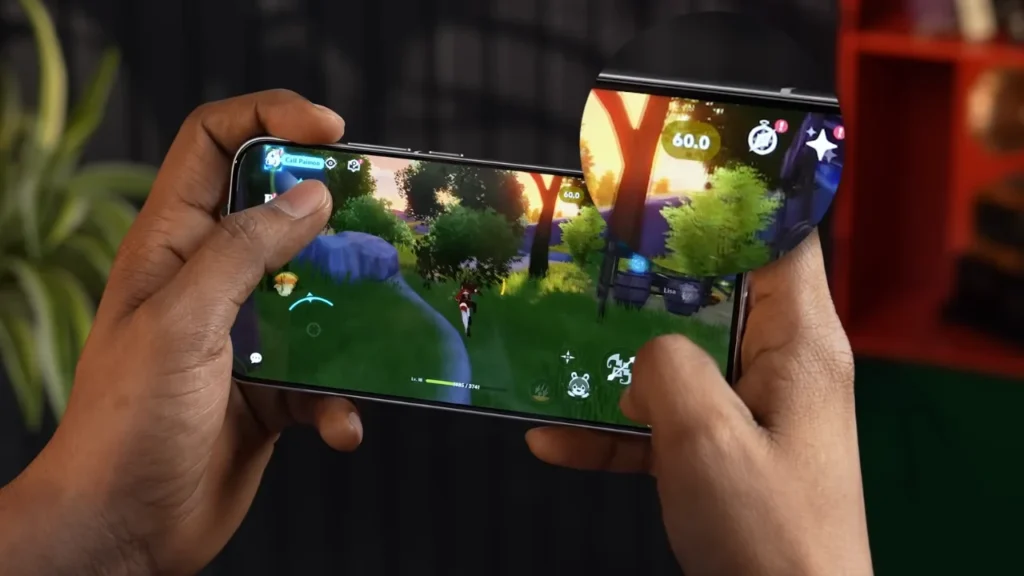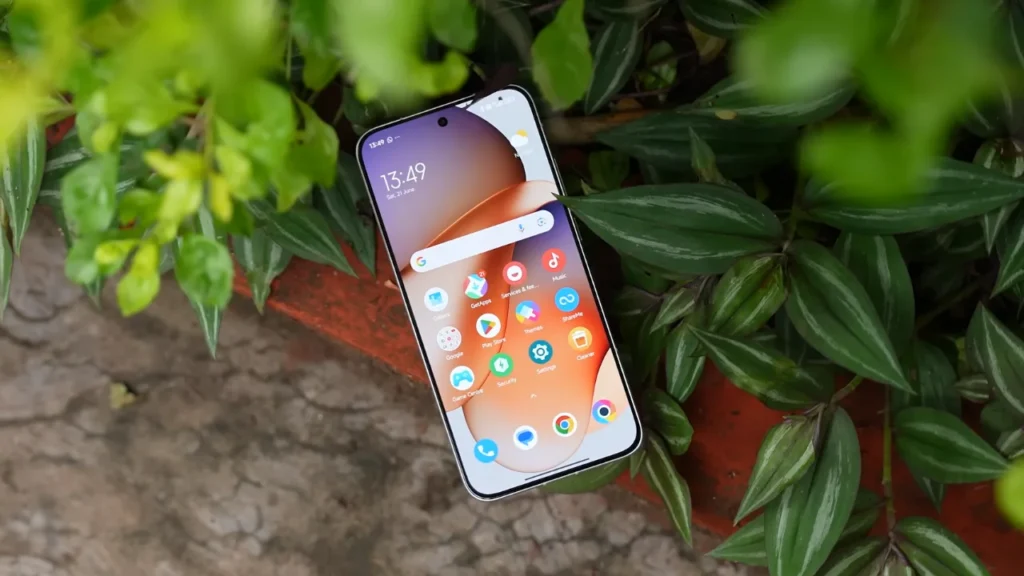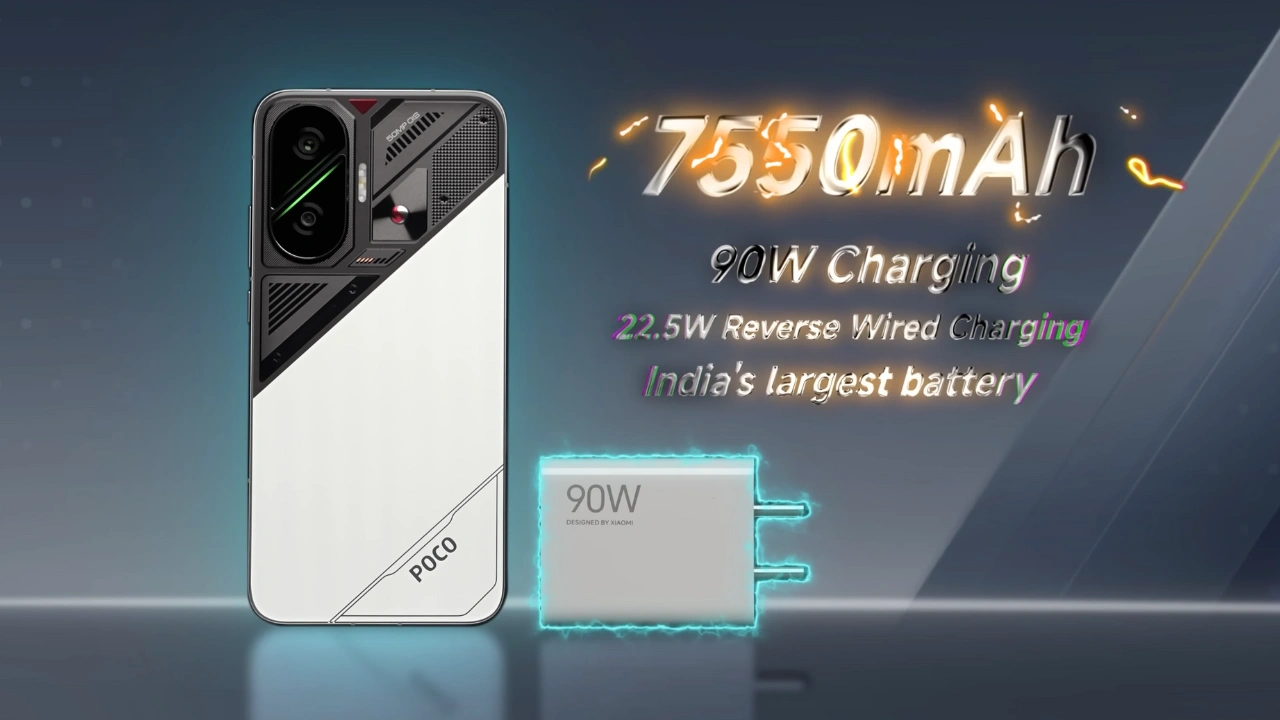The much-anticipated POCO F7 has finally launched in India on 24th June, and it’s safe to say—this device means serious business. Packed with premium features, top-tier performance, and a massive battery, POCO is aiming straight at the premium mid-range market with this one. If you’ve been waiting for a performance beast that doesn’t break the bank, this might be it. Let’s dive into the full details.
Box Contents: What’s Inside?
POCO has bundled all the essentials in the F7’s retail package. Here’s what you get:
- POCO F7 Smartphone
- 90W Fast Charger
- USB Type-A to Type-C Cable
- SIM Ejector Tool
- Transparent Protective Case
- User Manual & Documentation
No surprises here, but good to see that POCO includes a fast charger in the box when some brands are skipping it.
Design and Display: Premium All the Way
At first glance, the POCO F7 looks and feels like a flagship. It’s got a glass-metal sandwich design that feels solid in hand. The device weighs 221.8 grams, which makes it a bit hefty, but that’s expected considering the massive battery inside.
It comes in Cyber Silver Edition, Frost White, and Phantom Black color options. The Snapdragon logo on the back adds a unique touch, emphasizing the performance-centric nature of this phone.
The display is another highlight:
- 6.83-inch 1.5K OLED Panel
- 120Hz Refresh Rate
- 1700nits HBM, 3200nits Peak Brightness
- Dolby Vision Support
- Gorilla Glass 7i Protection on both sides
- IP66/IP68/IP69 rating
You also get TUV Rheinland Certification for low blue light, making it easier on the eyes during long use.
Camera: Sony Sensor Does the Job
The 50MP Sony IMX-882 main camera comes with OIS, and early impressions suggest it delivers great shots in various lighting conditions. It’s supported by an 8MP ultra-wide camera, and a 20MP selfie shooter on the front.
This setup should be enough for casual photography, social media content, and even some light vlogging.
Performance: Blazing Fast

Now let’s talk numbers. The Snapdragon 8s Gen 4 (4nm) processor powers this beast, and it’s paired with:
- 12GB LPDDR5X RAM
- 256GB/512GB UFS 4.1 storage
- Xiaomi HyperOS 2.0 based on Android 15
Benchmarks are impressive:
- AnTuTu Score: ~2,105,730
- Geekbench Multi-Core: ~6275
The 6000mm² 3D IceLoop cooling system with AI temperature control ensures performance stays stable even under heavy use.
You’re also getting 3 years of major updates and 4 years of security patches, which is a huge plus for long-term users.
Battery and Charging: No Compromise
This is where POCO has really pushed the limits. The F7 packs a gigantic 7550mAh battery, currently the largest in India. With this, you’re looking at two-day battery life easily, even with heavy usage.
- 90W Fast Charging gets you back up quickly
- 22.5W Reverse Wired Charging makes it usable as a power bank in emergencies
Connectivity: Everything You Need
The POCO F7 supports all modern connectivity standards:
- 15 5G Bands
- 4G VoLTE
- Wi-Fi 7
- Bluetooth 6.0
- NFC
This ensures you’re future-proofed when it comes to mobile network and wireless technology.
Pricing and Offers
The 12GB + 256GB variant is priced at ₹31,999. With applicable bank offers, you can get up to ₹4,000 discount, bringing the effective price down to ₹27,999—a fantastic deal for the features on offer.
Final Verdict: Is the POCO F7 Worth It?

Absolutely. The POCO F7 ticks almost every box—premium design, powerful processor, stunning display, large battery, and decent cameras. Whether you’re a gamer, a content creator, or just someone who needs a reliable daily driver, this phone delivers serious value.
If you’ve been waiting for the next big thing in the mid-premium segment, the POCO F7 could be your perfect pick.
Disclaimer: The above details are based on official specifications available at the time of writing. Actual performance and experience may vary depending on usage.
